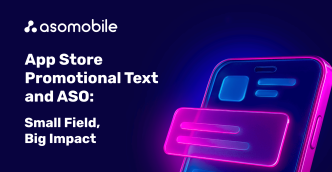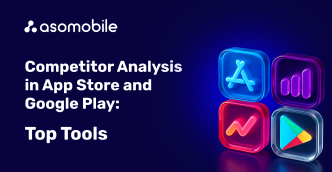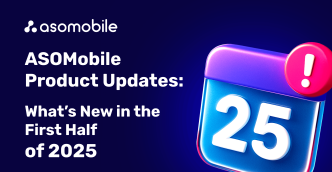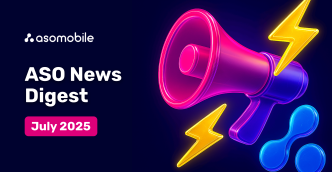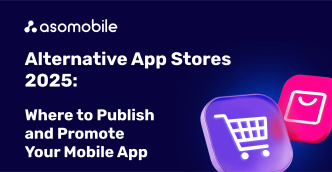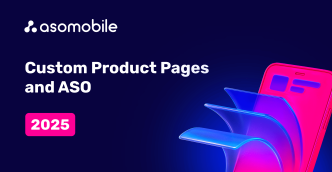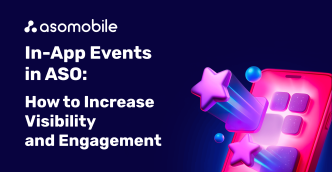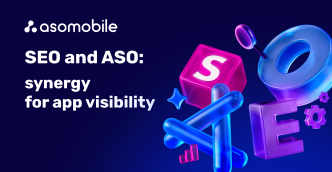Pre-registration in Google Play: Boosting Our App's Visibility
Pre-registration in Google Play is a powerful marketing tool that allows us, as Android app developers, to capture user attention even before the official launch of our product. By activating this feature, we can create a Google Play page for our app 3–6 weeks before release, enabling users to register for notifications about the launch or opt for automatic installation on the release day.
Pre-registration in Google Play as an App Marketing Tool

Pre-registration is not just about building a user base. It's a means to gauge demand, assess audience interest, and gather early feedback. This helps us minimize launch-related risks and gives our product a robust start, especially in the competitive app market.
Benefits of the Pre-registration Process:
Building a Base of Active Users - pre-registration helps us gather a core audience eager for our app’s release. These users are typically the most interested in our product and will likely become our first active users.
Generating Hype - the "Fear of Missing Out" (FOMO) effect is crucial here. Seeing others registering sparks interest and attracts more attention. This keeps existing users engaged while drawing in new ones.
Early Data Collection for Analysis - by collecting statistics pre-launch—such as registration numbers, user geography, and engagement levels—we can identify which marketing strategies work and adjust our campaign accordingly.
Adequate Launch Preparation - a high activity level on launch day can enhance our app’s visibility in the store, improve its category ranking, and attract organic user growth.
Examples of Successful Campaigns
Garena Free Fire:
This game launched with robust marketing support, including trailers and exclusive rewards for early users, resulting in over 50 million pre-registrations and a strong debut.
PUBG Mobile:
A large-scale pre-registration campaign for this game drew the attention of genre fans, leading to rapid popularity post-launch.
Pokémon UNITE:
Social media announcements, influencer collaborations, and exclusive bonuses brought 9 million pre-registrations, helping the game secure top positions immediately after release.
These examples demonstrate how pre-registration can give an app a strong market entry, even in highly competitive niches.
What is Pre-registration in Google Play?
Pre-registration is a feature in Google Play that allows us to promote an app or game before its official launch. It lets users register to be the first to know about the release or automatically download the app. This generates early interest and engagement while providing developers valuable insights about their potential audience.
How It Works for Users
- Launch Notifications:
Users who pre-register are notified about the app’s release, increasing the chances of immediate downloads. - Automatic Downloads:
With auto-download enabled, pre-registered users receive the app as soon as it’s available, minimizing interest loss and encouraging instant usage. - Bonuses and Exclusives:
Developers often offer unique rewards, such as in-game items or discounts, for pre-registered users, creating an added incentive to participate.
Creating a Pre-registration Campaign in Google Play

Preparation:
- Readiness Check:
- Upload the APK to Play Console.
- Ensure the app is ready for release within 90 days of the campaign's start.
- Confirm the app is unavailable for installation in regions where the campaign will run.
- Optional Rewards:
- Offer pre-registered users an incentive (e.g., an in-game item or character) as a bonus.
- Optimize the App Listing:
- Use high-quality creatives: icons, screenshots, and videos.
- Write a compelling, localized app description.
- Ensure compliance with Google Play’s app page requirements.
Campaign Launch:
- Enable Pre-registration in Play Console:
- Go to Releases → Promotion.
- Select Pre-registration and follow the activation steps.
- Create a Google Ads Campaign:
- Set up an App Campaign for pre-registration.
- Configure targeting and define a target cost per pre-registration (tCPpre).
- Upload Ad Materials:
- Prepare visuals, videos, and text ads.
- Localize content for the target regions.
- Publish and Monitor:
- Launch the campaign 2–6 weeks before the planned release. For more significant launches, start 9–12 weeks prior.
Monitoring and Optimization
Analyze Metrics:
- Track registrations in Play Console and Google Ads. Account for discrepancies due to factors like cancellations or duplicates.
Refine Ad Creatives:
- Identify the performance of each ad. Adjust visuals, texts, or videos to improve conversions.
Ensure App Stability:
- Before launch, confirm the app functions smoothly, is bug-free, and is optimized for target devices.
Final Steps Before Launch
- Notify pre-registered users via release alerts or automatic downloads (if enabled).
- Analyze campaign results to evaluate its success and refine future marketing strategies.
This step-by-step approach will help us organize a pre-registration campaign, increase awareness of our app, and ensure a successful launch. The most detailed instructions can be found in the Developer Console documentation.
Marketing Strategy for Pre-registration
- Preparing a High-Quality App Page on Google Play
An attractive app page is a key to success, as it marks the first interaction users have with our product.
Engaging Logo and Screenshots:
Visual content must be bright, modern, and unique. The logo should stand out among competitors, while the screenshots should showcase the app’s key features and benefits. Don’t forget to include annotations and graphics that explain the product’s value.
Attention-Grabbing Description:
Use concise, precise phrases that highlight the app's unique features. Incorporate keywords, following ASO best practices for Google Play. Start with a strong headline to capture attention instantly, then explain why users should register.
- Launching the Marketing Campaign
An effective marketing strategy maximizes attention to the pre-registration campaign.
Collaborating with Influencers:
Find bloggers and streamers who are popular with our target audience. They can highlight the unique features of our app, showcase gameplay, or explain the benefits of pre-registering. Their audience must align with our niche.
Advertising on Social Media and Similar Platforms:
Launch targeted ads on platforms like Facebook, Instagram, and TikTok. Use engaging video clips to demonstrate the app’s main advantages. This approach is efficient for games, where visuals play a critical role.
- Engaging with Users
Audience engagement makes the campaign more memorable and increases registration conversion rates.
Hosting Quizzes, Contests, and Giveaways:
Organize events to encourage user interaction. For example, offer prizes for correct answers to app-related questions or for completing specific actions, such as subscribing on social media or sharing posts.
Exclusive Rewards for Pre-registered Users:
Offer unique bonuses available only through pre-registration. These could include in-game items, discounts on premium features, or early access to exclusive app functionalities. Such exclusives create a sense of value and motivate users to act immediately.
Thorough app page preparation, a well-planned marketing strategy, and active user engagement are the three key components of a successful pre-registration campaign. The better we execute each of these elements, the more likely our app or game will start its journey with maximum user interest.
Analysis of Results
Analyzing pre-registration campaign results is crucial in evaluating its success and improving the app.
The first factor to consider is the number of registered users. This metric reflects the level of interest in our product and the effectiveness of our marketing efforts. The higher the number of registrations, the greater the potential for our app to achieve a strong launch.
However, the registration count alone does not provide a complete picture. It is equally important to assess user engagement levels, especially post-launch. This includes analyzing how many registered users have installed the app, how frequently they use it, and how long they remain active. For example, if a significant portion of users deletes the app within a few days, it may indicate retention issues or a lack of value for the target audience.
Another critical aspect of the analysis is user feedback. Reviews, comments on the app page, and mentions on social media can highlight what users appreciate and disappoint them. Positive feedback helps identify the app's strengths that should be further developed, while negative feedback highlights areas requiring improvement, whether in functionality, user interface, or performance.
Data on engagement and user feedback provides invaluable insights for optimization. For instance, if users report technical bugs or difficulties in usage, this signals the need for fixes before broader promotion. Feedback can also inspire ideas for new features or enhancements to existing ones.
Beyond app improvements, analyzing results helps refine the marketing strategy. Demographic data on registered users—such as age, location, and interests—enables us to narrow down our target audience. This is especially useful for future ad campaigns, ensuring efforts are directed where they will be most effective. Additionally, evaluating the performance of advertising channels is crucial. If, for example, YouTube proves more effective than display ads, reallocating the budget to this channel can maximize results.
The ultimate goal of the analysis is to measure current success and build a solid foundation for future growth. Thanks to the collected data, preparing for the next phase—a global launch or a user retention campaign—becomes more straightforward and more effective. Thus, every pre-registration campaign becomes a step toward a successful launch and a valuable source of insights for the app’s growth.
Let’s Sum It Up
Pre-registration is a strategic tool that helps us increase our product's visibility and lay a solid foundation for its success. We can ensure a strong launch and maintain user attention in the long term by applying the abovementioned approaches and continuously improving our app based on collected data.
 Українська
Українська  Русский
Русский  Español
Español 